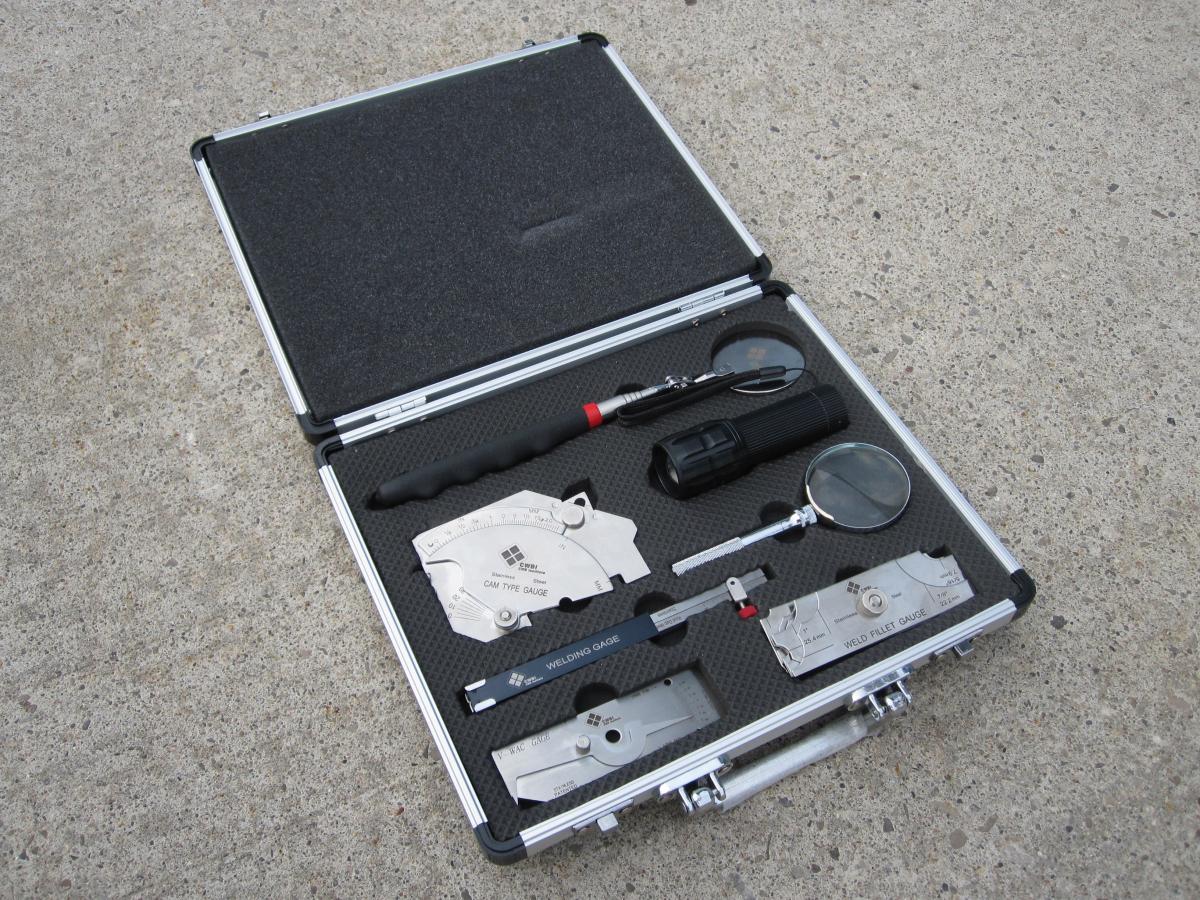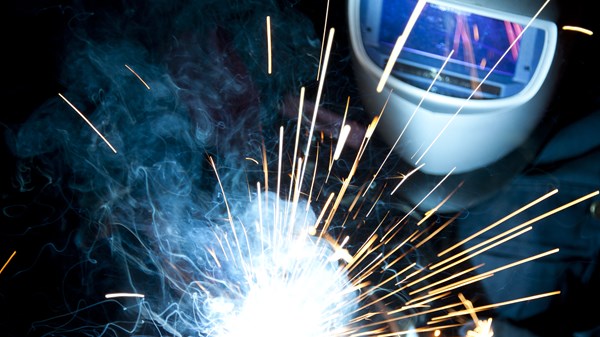Common Issues Found Throughout Welding Inspection Milwaukee and How to Fix Them
Common Issues Found Throughout Welding Inspection Milwaukee and How to Fix Them
Blog Article
Understanding the Relevance of Welding Examination in Ensuring Structural Honesty and Safety And Security Across Different Industries
Welding evaluation is a vital process that safeguards structural honesty and safety throughout varied industries. By thoroughly assessing weld high quality, assessors help protect against flaws that might lead to tragic failures. This organized evaluation not just reinforces conformity with industry standards but also plays a pivotal role in protecting assets and making sure public safety and security. The ramifications of ignoring appropriate examination techniques are extensive, typically resulting in significant economic and human expenses. As we discover the complexities of welding examination, the inquiry emerges: what are one of the most critical variables that add to effective inspection procedures?
Role of Welding Examination
While the honesty of welded structures is paramount to security and efficiency, the role of welding assessment can not be overstated. Welding assessment functions as an essential quality control procedure that makes certain the adherence to established requirements and specifications throughout the welding procedure. By systematically assessing welds for problems, inconsistencies, and non-compliance, inspectors play a critical duty in protecting the integrity of structures throughout various markets.
Welding evaluations encompass a series of tasks, from pre-weld analyses to post-weld evaluations. These evaluations not just identify potential issues prior to they rise yet likewise boost the total reliability and life expectancy of welded components. Welding Inspection Milwaukee. Evaluations assist to verify the ability and competencies of welders, making certain that welding procedures are executed appropriately and materials are compatible
Additionally, a strenuous assessment protocol cultivates conformity with regulatory requirements and industry requirements, minimizing the danger of disastrous failings. By promoting a culture of safety and liability, welding examination contributes considerably to both financial and functional effectiveness. In sum, the duty of welding examination is crucial, as it underpins the high quality, security, and durability of welded structures necessary to contemporary framework and sector.
Kinds of Welding Evaluations
Recognizing the numerous types of welding assessments is essential for keeping the quality and security of bonded structures. Welding inspections can be categorized into a number of types, each offering a specific function in the assessment procedure.
Visual examination is one of the most basic kind, entailing a mindful exam of the welds with the nude eye or via zoom. This method aids identify surface area issues such as splits, insufficient fusion, or excessive spatter.
These methods permit assessors to evaluate the stability of welds without endangering the material's structure. Ultrasonic screening utilizes high-frequency sound waves to detect interior imperfections, while radiographic screening utilizes X-rays or gamma rays to imagine interior weld characteristics.
Devastating testing, though much less usual, includes physically testing samples to understand the weld's mechanical residential properties. Each sort of evaluation contributes to a thorough analysis, making certain that welding meets sector standards and safety needs.
Market Standards and Rules
Developing industry criteria and regulations is vital for making certain the safety and integrity of welded structures. These standards serve as standards for safety and security, performance, and top quality, guiding producers and assessors in the implementation of welding processes. Numerous organizations, such as the American Welding Society (AWS) and the International Company for Standardization (ISO), have developed detailed criteria that dictate procedures for welding practices, credentials of welders, and examination techniques.
Conformity with these laws not just enhances the high quality of welds yet also decreases risks linked with architectural failures. Certain codes, such as the ASME Central Heating Boiler and Stress Vessel Code, outline requirements for the building of pressure vessels, ensuring they can hold up against functional stresses. Furthermore, national and neighborhood guidelines typically mandate adherence to these industry standards, reinforcing their importance throughout sectors like building, aerospace, and automotive production.
Routine updates to these requirements show developments in innovation and welding strategies, making sure that safety measures continue to be appropriate. Therefore, a comprehensive understanding and application of these standards is essential for welding professionals, cultivating a society of safety and security and top quality in welded frameworks.
Repercussions of Poor Inspections
Poor inspections can cause serious effects Get the facts in the welding industry, threatening the extremely standards and laws developed to guarantee security and structural visit this page honesty. The consequences of poor evaluations can manifest in various kinds, from immediate safety and security dangers to lasting structural failures. One of one of the most worrying results is the capacity for catastrophic crashes, which can cause substantial injury or death. In industries such as production, building, and aerospace, the implications of second-rate welding can jeopardize whole structures or components, leading to expensive repair work and substantial downtime (Welding Inspection Milwaukee).
Additionally, inadequate examinations can tarnish a firm's track record and result in legal consequences, consisting of penalties and litigation. Non-compliance with well established requirements not only endangers the stability of jobs yet likewise decreases customer trust in the brand name. In addition, the economic effects can be astonishing, including both straight prices associated with repairs and indirect costs such as shed service opportunities and boosted insurance policy costs. Ultimately, the ramifications of poor inspections expand beyond specific tasks, affecting industry-wide requirements and public understanding, therefore stressing the crucial demand for strenuous and reliable welding assessments.
Finest Practices for Effective Evaluations
Efficient welding inspections are extremely important to ensuring the honesty and security of bonded frameworks. To achieve optimal outcomes, assessors must follow a number of finest practices that improve the examination procedure.

Second of all, examiners must Visit Your URL possess the essential credentials and accreditations appropriate to the welding processes and materials being analyzed. Continuous training and specialist advancement are critical to remaining upgraded on sector standards and technological advancements.
Additionally, using proper inspection tools and strategies, such as aesthetic evaluations, ultrasonic screening, and radiographic examinations, is important for discovering defects that can compromise architectural honesty.
Lastly, comprehensive documentation of the inspection process is crucial. This includes recording searchings for, photographs, and any type of corrective activities taken. Accurate and clear reporting not only facilitates responsibility but also aids in future evaluations and upkeep. By implementing these best practices, companies can considerably improve the performance of their welding assessments and ensure risk-free, trusted procedures.
Conclusion

In verdict, welding assessment is crucial for maintaining architectural integrity and safety and security throughout various sectors. Prioritizing efficient welding evaluations is imperative to guarantee the safety of workers, assets, and overall functional integrity.

As we explore the complexities of welding inspection, the concern arises: what are the most vital variables that contribute to efficient examination processes?
Welding examination serves as a vital quality control process that makes certain the adherence to developed criteria and specs throughout the welding operation. In sum, the function of welding assessment is crucial, as it underpins the top quality, security, and longevity of welded structures important to contemporary facilities and industry.
Various organizations, such as the American Welding Society (AWS) and the International Company for Standardization (ISO), have established comprehensive standards that determine procedures for welding methods, credentials of welders, and examination methods.
Inevitably, the ramifications of inadequate examinations extend past individual projects, impacting industry-wide requirements and public perception, therefore stressing the essential demand for strenuous and reliable welding examinations.
Report this page